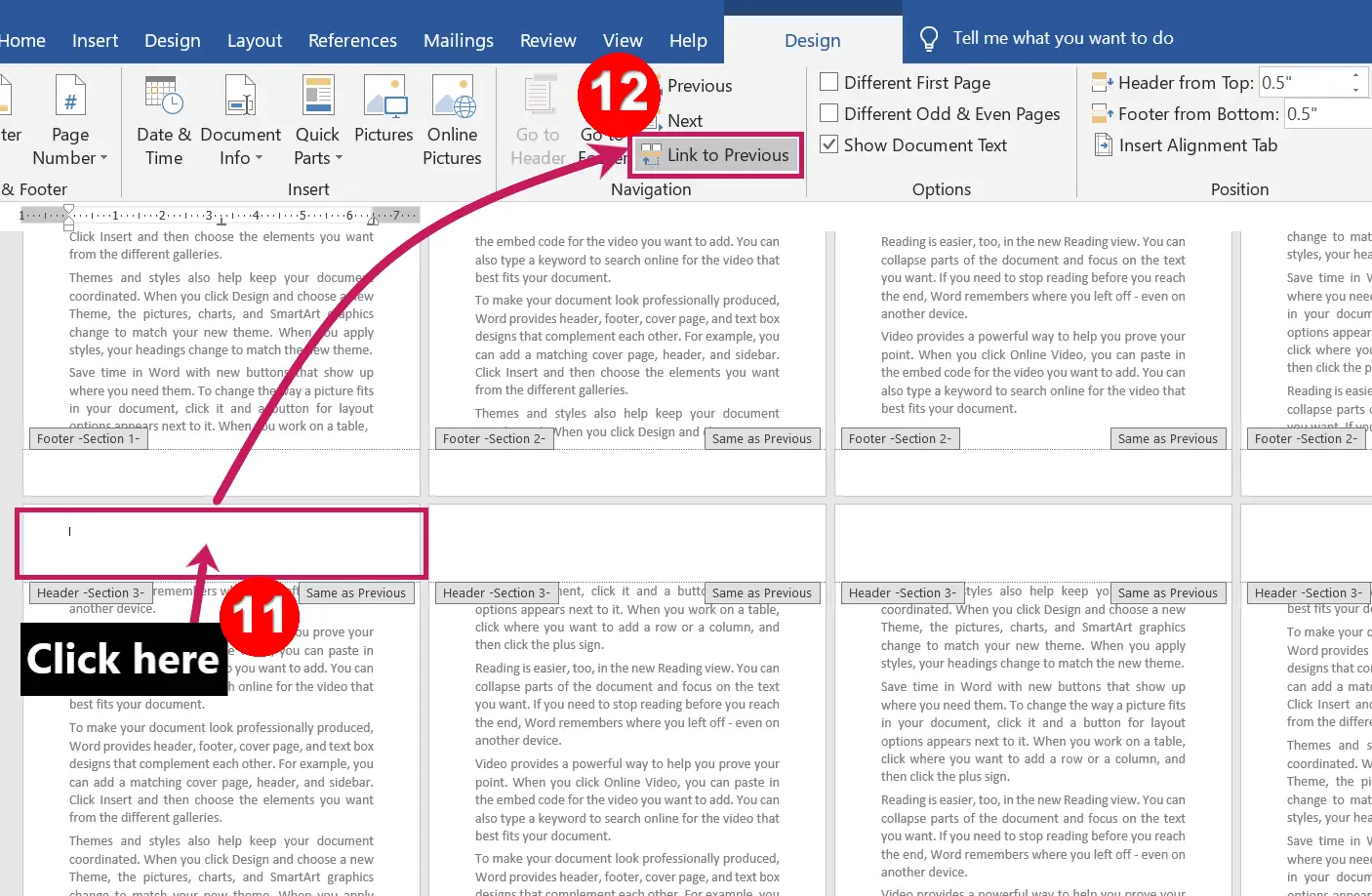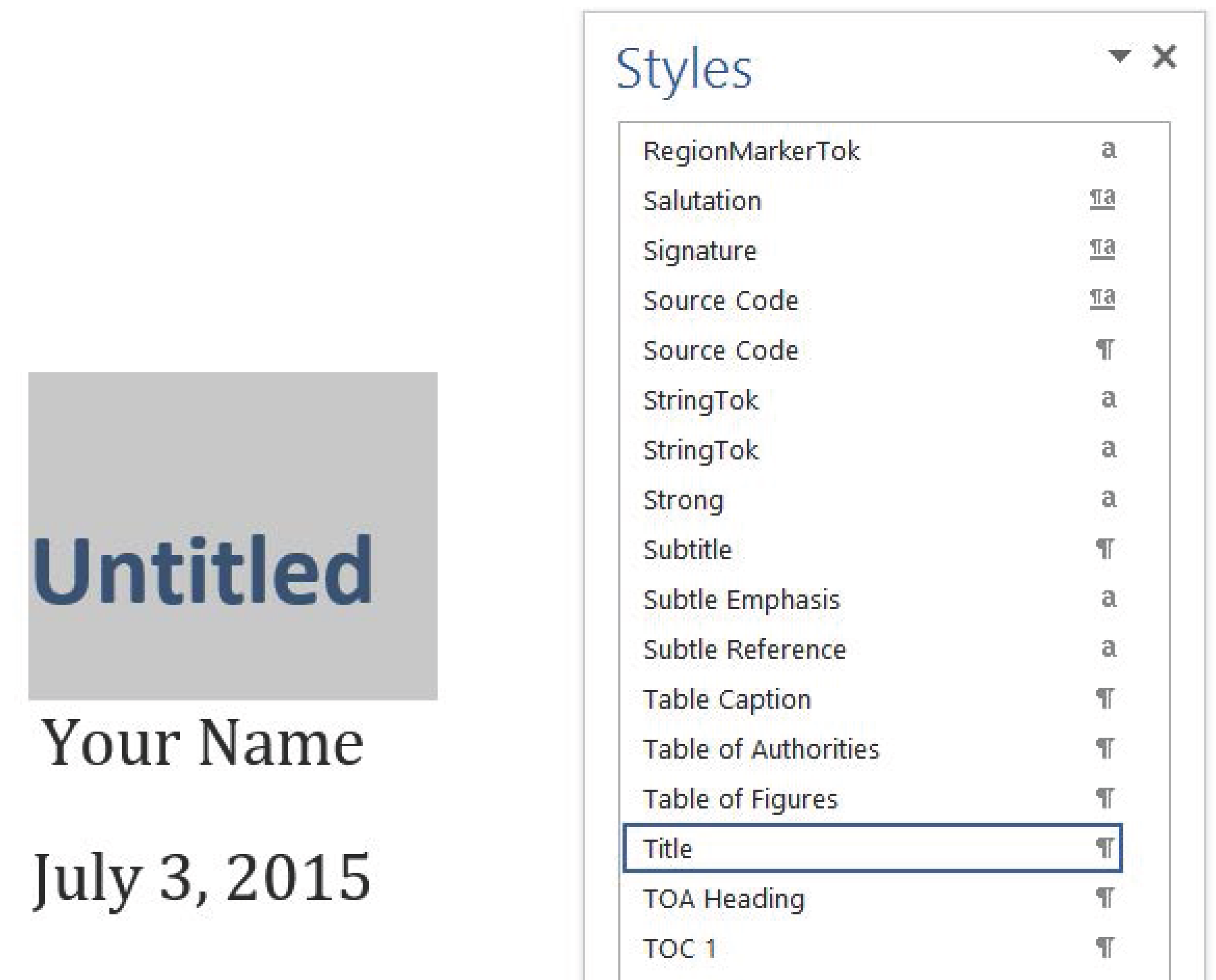

On Link to Previous (and OK the prompt asking whether to discard the existing header). Even in that case, though, you wouldn't have to edit the headers just turn The only time you would have to visit the header(s) in every section is if the original author didn't use Link to Previous and instead pasted a copy of the header into each section. The Link to Previous applies only to headers and footers of the same type.

If either or both of the "Different First Page" and "Different Odd & Even Pages" check boxes are checked, you'll have to change each of those types of headers separately. Particularly the parts about "Types of headers and footers" and "What happens when you have more than one section". Get really good ideas every day: Subscribe to the Daily Dispatch and Weekly Wrap (it’s free).If all the headers after the first one have Link to Previous turned on (in the Header & Footer Tools ribbon, which appears when the cursor is in the header or footer pane), then you only have to change one section. Illustration © Subscribe to Attorney at Work

However, once you reset your default fonts, at least your days of adjusting the fonts every time you start a document are behind you.Ĭlick here to read more of Deborah’s Microsoft Office tips. This will modify all the headings for this document.
#How to change all headings in microsoft word update
This doesn’t affect documents you receive from others or any existing documents you created. Then right click on the desired Heading style you wish that text to resemble and select Update Heading to Match Selection. Now Every New Document You Start in Word Will Use the Microsoft Office Fonts You Prefer Save everything you’ve done by clicking Set as Default on the Design tab (next to the Colors and Fonts buttons). Word will ask whether you want to make this the default for this document only or for all future documents based on the Normal template. Select +Body and the size text you want, then click Set as Default in the lower left-hand corner. Go to the Home tab and click on the small launcher arrow in the lower right-hand corner of the font section to go to the Font dialog box. Once you reset the font style, the default text size is an easy fix, too. Then you can name your preferred font set before clicking Save. Just use the drop-down for each to find a font more to your liking. This is where you set the two Styles I told you about earlier, +Body and +Headings, which in turn control basic settings for many of the other Styles in a Word document. This section shows you see a live preview of. This section lets you set your alignment and indention preferences. You can also apply bold, italics, or underline to your text. On the left, you’ll see Heading font and Body font. This section lets you modify the font type, size, and color. That’s going to take you into the Create New Theme Fonts dialog box. The Replace tab of the Find and Replace dialog box. Press Ctrl+H to display the Replace tab of the Find and Replace dialog box. From here, you want to choose Customize Fonts. Click the number 4 on the Outline toolbar so that only your headings, levels 1 through 4, are displayed. Clicking on Fonts will give you a list of preconfigured font sets. Over on the far right is a drop-down called Fonts. These settings are found in the Design tab (introduced into Microsoft Word with version 2013). Fortunately, you can permanently change just two Styles (+Body and +Headings) to give your documents a more businesslike typeface. One of the most persistent frustrations legal users have with Microsoft Word fonts is the default font settings. If you’re sick of MicroSoft word fonts Calibri and Cambria, change your default heading and body styles so you can start every new Word document with the fonts you prefer.


 0 kommentar(er)
0 kommentar(er)
